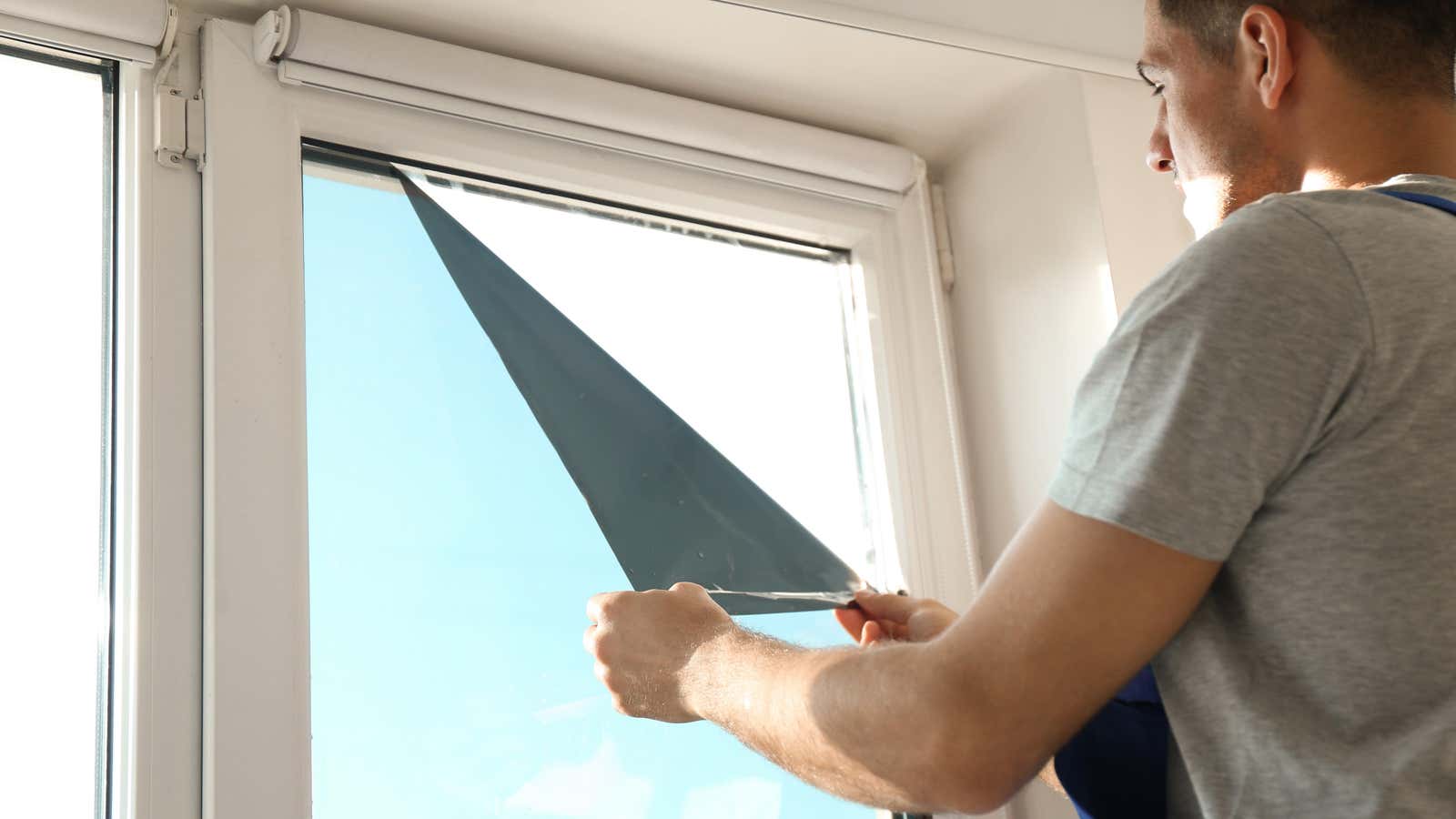How to Tint Windows in Your Home (and Why You Need It)

When you hear “tinted windows,” you are probably thinking primarily about cars – and the various degrees in which you can tint their windows legally (or outside). But you can also tint the windows of your home without the annoying legal drama – and you might want to.
Why tint windows in your home?
There are many reasons for tinted windows in your home, starting with the fact that the sun is damn bright and will probably wake you up earlier than you would like on Saturday morning. But window tinting is divided into three categories: solar tinting, protective tinting, and decorative tinting.
Solar tinting provides UV protection but does not darken. Protective tinting includes layers of polyester film that can help protect against burglary. And decorative tinting just helps your windows look their best. You can do this for privacy, to darken a space, or to protect yourself from invaders, be it thieves or ultraviolet rays.
Toning can also increase the resale value of your home and save you some money while you are still living in it.
“People don’t know that tinted windows at home is a dividend investment,” said Lewis Goldberg Jr., owner and installer of Window Tinters in New Jersey. “Just reduce the heat in the summer and adding an insulating layer to the glass in the winter will cut your utility bills.”
How common is window tinting?
Tinting home windows is not as well known as tinting car windows, but many people still opt for it. Goldberg has tinted windows for 12 years and has noticed an increase in the number of customers using the service, but added that the surge is regional.
In sunnier locations, he said, “it’s a big need just for sun protection.” In other areas, it is considered more of a luxury. But even if it’s not too sunny where you live, he said, “every home can benefit from blocking harmful UV rays.”
What does it include?
You can of course do it yourself, but you need to know what you are getting yourself into. It’s not easy, but you can save some money if you decide to take on the project yourself. You need to know what shade you want, buy the right film, measure the windows, cut the film and clean the glass – all before starting the actual project. Tip: Add an inch to your measurements across the entire glass so you have some wiggle room in case you make a mistake.
Peel off the backing and apply tint, but remember that like any sticker or wallpaper, it can fold and stick to itself. The two sticky sides that meet will be difficult to separate from each other, and you may have to buy more shade than you bargained for if your first few pieces get stuck.
Read the instructions for the movie to understand how it works. Is it water activated or is there something else activating the glue? And don’t forget that after you place it, you need to carefully remove the bubbles under the film and trim the edges without scratching the glass.
“As easy as it sounds to a professional, only a true professional knows how to safely tint and has access to the films that are covered by the warranty,” Goldberg said. Yes, guarantees. See? This is a lot!
If you eventually find a professional, expect to pay for their expertise.
“Depending on the type of film, the distance traveled and the difficulty, professional tinting in living spaces can range from $ 10 to $ 15 per square foot,” Goldberg said, noting that hard-to-reach windows can increase costs. Some specialty films, like transitional window tints, can cost up to $ 36 per square foot.
Of course, you don’t need to have tinted windows all over your home – some rooms may have tinted windows, while others are great for staying natural.